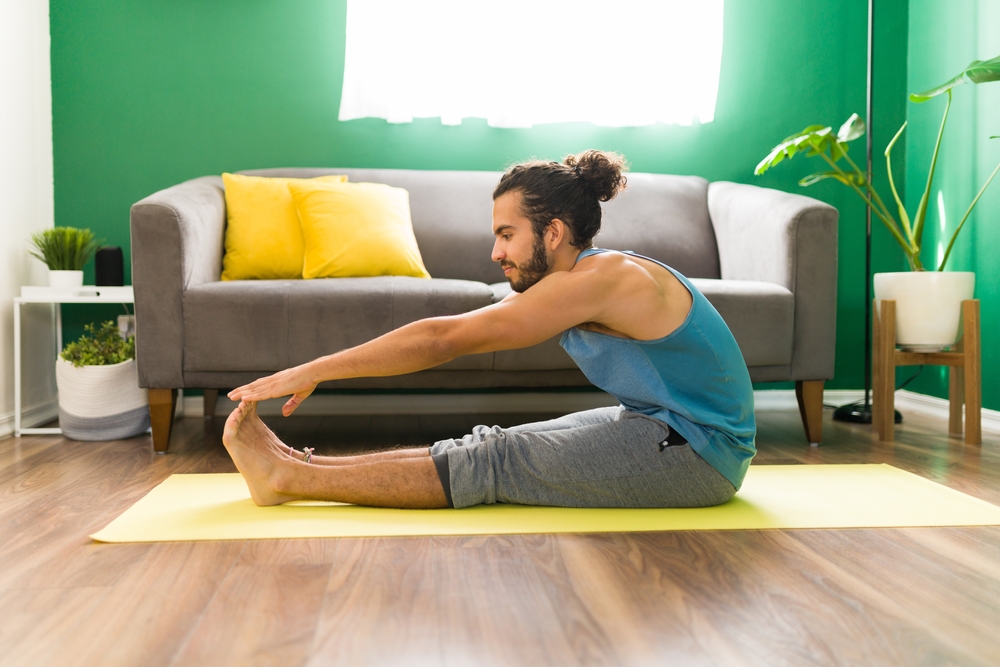Back pain is a common ailment that affects millions of people worldwide. Whether it’s due to a sedentary lifestyle, poor posture, or stress, back pain can greatly impact one’s quality of life. Fortunately, incorporating regular stretching exercises into your daily routine can help alleviate back pain and improve overall flexibility and mobility. In this article, we’ll explore ten effective stretches that can provide much-needed relief for your back.
1. Cat-Cow Stretch:

The Cat-Cow stretch is an excellent way to warm up the spine and increase flexibility in the back and neck. Start on your hands and knees, with your wrists aligned under your shoulders and knees under your hips. Inhale as you arch your back and lift your head, creating a “cow” shape. Exhale as you round your back, tuck your chin, and create a “cat” shape. Repeat this movement for 10-15 reps.
2. Child’s Pose:

Child’s Pose is a gentle stretch that targets the lower back and helps relieve tension in the spine. Begin by kneeling on the floor, then sit back on your heels while extending your arms forward. Lower your chest toward the ground and hold the position for 30 seconds to 1 minute, breathing deeply to enhance the stretch.
3. Sphinx Pose:

The Sphinx Pose is a backbend that stretches the chest, shoulders, and spine. Lie face down on the floor, then prop yourself up on your forearms, keeping your elbows directly under your shoulders. Press your hips and thighs into the ground while lifting your chest and head towards the ceiling. Hold the pose for 20-30 seconds, being mindful not to overextend your back.
4. Seated Forward Bend:

The Seated Forward Bend is an effective stretch to release tension in the hamstrings and lower back. Sit on the floor with your legs extended straight in front of you. Inhale deeply, then exhale as you hinge at your hips and reach towards your toes. Hold the stretch for 30 seconds, feeling the lengthening of your spine and the backs of your legs.
5. Piriformis Stretch:

The Piriformis stretch targets the piriformis muscle, which can become tight and contribute to lower back pain. Lie on your back or stay in a sitting position with your knees bent and feet flat on the floor. Cross one ankle over the opposite knee, then gently pull the bottom leg towards your chest. Hold for 20-30 seconds on each side.
6. Thread the Needle:

Thread the Needle is a restorative stretch that targets the muscles along the spine and shoulders. Begin on your hands and knees, then reach one arm under your body and across the floor, keeping your hips squared. Hold the stretch for 20 seconds on each side, breathing deeply to release tension. Here’s a fun tutorial on how to do this one!
7. Standing Forward Bend:

The Standing Forward Bend is an excellent way to decompress the spine and stretch the entire back. Stand with your feet hip-width apart, then hinge at the hips and reach towards the ground. Allow your upper body to relax and hold the stretch for 30 seconds, feeling the release in your lower back and hamstrings.
8. Cobra Stretch:

The Cobra stretch opens up the front of the body while stretching the abdominal muscles and relieving pressure on the lower back. Lie face down on the floor with your palms flat on the ground near your shoulders. Press into your hands to lift your chest off the ground, while keeping your hips and legs engaged. Hold the pose for 20-30 seconds, being careful not to strain your back.
9. Knee-to-Chest Stretch:

The Knee-to-Chest stretch is a gentle way to stretch the lower back and hip flexors. Lie on your back and bring one knee towards your chest, holding it with both hands. Hold the stretch for 20 seconds, then switch to the other leg.
10. Pelvic Tilt:

The Pelvic Tilt is a simple exercise that strengthens the core muscles and helps stabilize the lower back. Lie on your back with your knees bent and feet flat on the floor. Gently tilt your pelvis up towards the ceiling, engaging your abdominal muscles. Hold for a few seconds, then release and repeat for 10-15 reps.
Remember, consistency is key to seeing improvements in back pain. Incorporate these stretches into your daily routine, and gradually increase the duration and intensity as your flexibility improves. However, if you experience severe or persistent back pain, it’s essential to consult a healthcare professional for a proper diagnosis and personalized treatment plan. Stretching can be beneficial, but it should complement a comprehensive approach to back pain management, including regular exercise, proper posture, and a healthy lifestyle. By taking care of your back, you can pave the way for a more comfortable, active, and pain-free life.




Leave a Reply